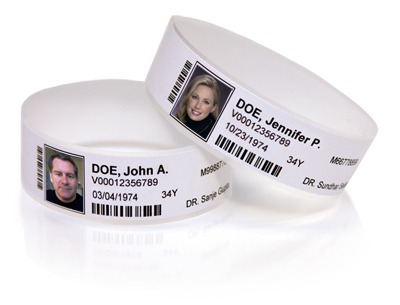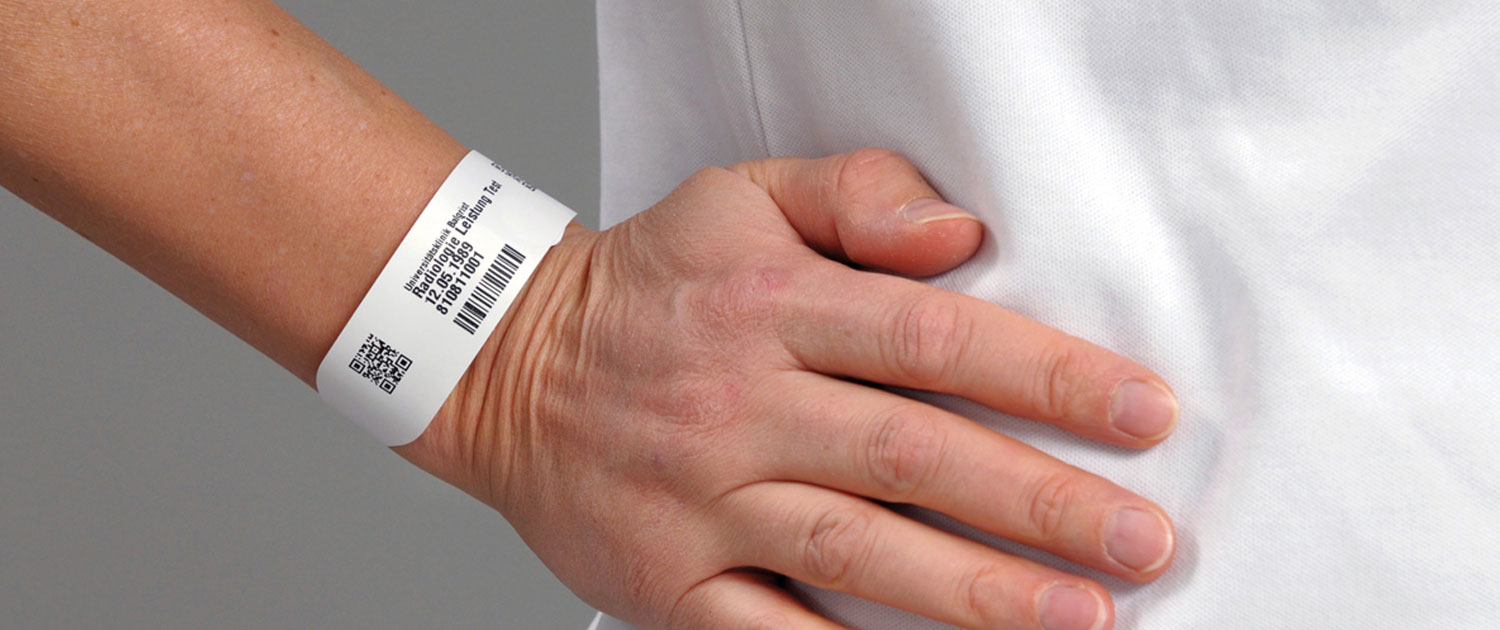Why Client Recognition Bands Are Important for every single Healthcare Facility
In the facility landscape of healthcare, person identification bands act as a fundamental aspect in securing patient security and minimizing clinical mistakes. These bands provide important information that not just facilitates accurate identification yet also improves interaction among doctor. As organizations make every effort to meet regulative compliance and enhance total operations efficiency, the role of recognition bands becomes progressively significant. Nonetheless, the effects of their usage extend beyond simple conformity-- what are the potential repercussions of neglecting this essential method? Discovering this inquiry discloses a much deeper understanding of client safety and security and top quality treatment.
Fighting Medical Mistakes
In the world of health care, avoiding clinical mistakes is paramount to making sure client security and high quality of care. Among one of the most essential variables in alleviating such mistakes is the accurate recognition of patients. Misidentification can cause unsuitable therapies, medication mistakes, and even medical errors, all of which can have disastrous consequences for people and health care companies alike.
Client identification bands act as a basic tool in this precautionary strategy. These bands commonly have vital information, such as the individual's name, day of birth, and one-of-a-kind identification number, allowing medical care professionals to verify the person's identity quickly and properly prior to administering any kind of care. Ensuring that these bands are correctly applied and consistently utilized throughout all medical care settings is important.
In addition, the implementation of electronic wellness documents (EHR) can enhance the effectiveness of person identification bands by integrating them with electronic systems that flag prospective inconsistencies. Normal training and adherence to methods regarding making use of client identification bands can substantially decrease the possibility of mistakes. In recap, durable person recognition practices are essential for protecting and minimizing medical errors individual welfare within health care atmospheres.
Enhancing Person Safety
Patient safety is a multifaceted concept that incorporates various techniques and practices made to protect people from damage during their healthcare experience. One essential component in boosting person safety is the implementation of individual recognition bands. These bands work as an essential device for making certain that medical care companies can precisely determine patients, thus minimizing the risk of misidentification.
The visibility of person recognition bands considerably reduces the chances of providing incorrect medicines, conducting unplanned treatments, or failing to recognize allergic reactions. By affixing an unique identifier to each client, medical care facilities create a reliable system that cultivates responsibility and watchfulness amongst medical personnel. This proactive technique not only boosts the security of clients but additionally infuses a sense of trust in the healthcare system.
Furthermore, person identification bands add to a standardized method that can be quickly integrated into digital health documents. Patient Identification Band. This combination ensures that important client details is easily accessible, further strengthening safety and security steps. Eventually, the reliable use recognition bands is an essential method that underpins a culture of safety, aiming to protect patients and boost general health care results
Improving Interaction
Efficient interaction is vital in the medical care setup, as it straight influences client safety and care quality. Person recognition bands work as a critical tool for enhancing communication among doctor. By clearly displaying necessary patient details such as name, day of birth, and clinical document number, these bands facilitate precise recognition, lowering the threat of errors in treatment and medication administration.
Additionally, patient identification bands cultivate a culture of responsibility and verification within health care groups. When all employee are equipped with prompt accessibility to reputable patient recognition, the chance of miscommunication lessens significantly. Throughout handoffs between changes or interdisciplinary assessments, the existence of recognition bands makes sure that every person entailed is on the exact same page concerning person identity and medical background, thereby minimizing misconceptions.
Additionally, these bands can integrate with digital wellness records (EHR), permitting for seamless interaction of client info throughout numerous systems. This connection not just boosts the performance of info sharing however also sustains a more worked with technique to person treatment. Eventually, the adoption of client identification bands is vital for improving interaction, thus adding to much better health outcomes and making sure that individuals get the highest criterion of treatment.

Streamlining Workflow
The execution of client recognition bands considerably contributes to streamlining process within medical care environments. By supplying clear and prompt identification of clients, these bands minimize the time medical care experts invest validating individual details. This efficiency click to investigate minimizes the possibility for mistakes, permitting personnel to concentrate on direct individual care rather than management jobs.
With standardized recognition processes, healthcare groups can rapidly access vital individual information, consisting of clinical background, allergic reactions, and treatment plans. This fast access improves decision-making and permits prompt interventions, eventually improving client end results. Moreover, the usage of recognition bands helps with much better sychronisation amongst multidisciplinary groups, guaranteeing that all members have the appropriate info at their fingertips.

On top of that, patient identification bands can be integrated with digital health and wellness record (EHR) systems, additionally maximizing operations. By scanning a band, medical care companies can rapidly update and share details, thus decreasing redundancy and simplifying documentation efforts. This combination assists keep a continuous circulation of information, which is critical in dynamic medical care settings.
Ensuring Regulatory Conformity
In today's healthcare landscape, making sure regulatory compliance is vital for preserving client safety and organizational honesty. Person identification bands play an essential role in meeting numerous regulative criteria, such as those stated by the Joint Commission and the Centers for Medicare & Medicaid Provider (CMS) These companies emphasize the requirement of precise person identification to lessen medical mistakes and enhance the top quality of treatment.

Applying standardized client recognition bands aids medical care facilities conform with laws that need precise client recognition at every stage of treatment. This includes medicine administration, surgeries, and blood transfusions. Non-compliance can bring about significant repercussions, including fines, loss of accreditation, and, most significantly, endangering individual safety and security.
Moreover, using technology, such as barcoding and RFID systems incorporated with person identification bands, can additionally boost conformity efforts by guaranteeing that the best patient obtains the appropriate treatment at the correct time. By prioritizing the execution of durable person identification systems, medical care centers not only comply with regulatory standards yet also foster a society of safety and go to my blog liability, inevitably improving individual results and trust fund in the healthcare system.

Conclusion
In verdict, person recognition bands function as a fundamental part in healthcare facilities, significantly contributing to the avoidance of medical mistakes and the improvement of individual safety. By improving communication amongst medical team and improving operations, these bands assist in more efficient medical care shipment. Additionally, their function in ensuring conformity with regulatory criteria can not be overemphasized. Eventually, the implementation of individual recognition bands is necessary for fostering a much safer healthcare setting and enhancing overall person outcomes.
In the facility landscape of health care, individual identification bands offer as a fundamental component in securing person safety and reducing clinical mistakes. These bands generally consist of important info, such as the individual's name, day of birth, and distinct identification number, permitting view publisher site healthcare professionals to verify the individual's identification quickly and properly prior to carrying out any kind of treatment.Implementing standardized patient identification bands assists healthcare facilities conform with regulations that require precise patient recognition at every phase of treatment.In verdict, individual identification bands serve as a basic part in medical care centers, substantially adding to the avoidance of medical errors and the improvement of patient safety - Patient Identification Band. Ultimately, the application of person identification bands is necessary for promoting a safer medical care environment and improving total client outcomes
Comments on “Exactly How a Patient Identification Band Can Boost Medical Facility Performance and Accuracy”